The concept of space and time has always fascinated Man, who has become, over the centuries, with his evolution, a traveler of eras and universes. Perhaps precisely by embracing this image, the famous writer Italo Calvino (Santiago de Las Vegas de La Habana, 1923 – Siena, 1985), gave life, with his silent pen, to Qfwfq, protagonist of the books Le Cosmicomiche and Ti con zero. This famous character inspires the exhibition “Qfwfq. Storie di artisti in movimento”, hosted by the Italian Cultural Institute in Warsaw until 6 December 2023. But let’s find out more about this incredible exhibition, which celebrates the centenary of Calvino’s birth, precisely with the curators who created it: Leonardo Regano and Alex Urso.
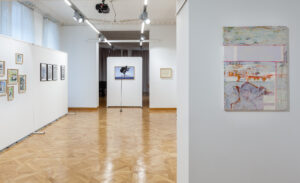
A.A.V.V., Qfwfq. Storie di artisti in movimento / Qfwfq. Opowieści artystów w ruchu, installation view at Italian Institute of Culture, Warsaw, photo Frederik Gruyaert
Antonella Buttazzo: Calvino has given us a profound reflection on the relationship between the writer’s profession and reality, which constitute two distinct worlds, but in continuous comparison. In your opinion, what is the relationship between the art world and reality?
Leonardo Regano: If you think about it, the comparison with reality has always been inherent in the true essence of art and it is not always a peaceful relationship. Sometimes art surpasses reality, denying it or re-establishing it; others instead follow it slavishly, to the point of becoming news and daily newspaper. These two different possibilities of reading the relationship between the art world and reality are also present in the research of the artists we have selected for the exhibition, a reflection that aims to be a tribute to Italo Calvino’s thought of.
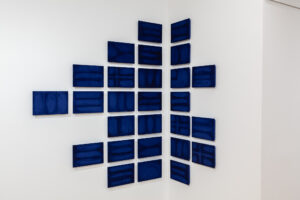
Jacopo Mazzonelli, Anthem, 2022. A.A.V.V., Qfwfq. Storie di artisti in movimento / Qfwfq. Opowieści artystów w ruchu, installation view at Italian Institute of Culture, Warsaw, photo Frederik Gruyaert
The works on display, closely related to the themes of travel and migration proposed by Calvino in Cosmicomiche, are part of a very particular contemporary cultural and ideological context, within which these themes resonate widely. How were these protagonist elements reworked by the artists involved?
Leonardo Regano: Rereading Italo Calvino’s work, I found in Qfwfq a new Ulysses, a traveler who moves between space and time in search of his own identity, be it historical, intimate and emotional. In each chapter of this syncopated narrative, Calvino addresses complex issues such as diversity, love, the search for the Self and conflict, linking them to the scientific events that characterized Creation and the beginning of life on our Planet. It is in the identification of these topics, combined with the common thread that is travel, that the exhibition “Qfwfq. Stories of artists in motion” was born. The journey is expressed in different contexts: from the most current ones such as in Karolina Grzywnowicz’s work which denounces the inhuman Israeli-Palestinian conflict – a delicate and current topic today -; then there is Radek Szlaga who in his paintings brings attention to the concept of the border and the social and political precariousness of the territories that cross it; Diana Lelonek in her work moves on the axis of time, presenting a work in which the Silesian territory and its mines represent the possibility of survival, but also the harshness of the miners’ life. The journey is also a journey back into one’s family and personal memories, as the works by Giuseppe Stampone and Alex Urso remind us. Michał Smandek, on the other hand, brings the eighteenth-century Grand Tour back into vogue with images that tell the story of the Italian landscape not in its architectural beauty but in its fragility, expressed by our Volcanoes as a warning of a precarious human presence; and then, again, Elena Bellantoni’s work, which proposes an exploratory journey to the South of the world, in Chilean Patagonia, conducted with the spirit of an anthropologist and which brings to our attention the harsh effects of the first European colonialism, of which still today the subjugated populations pay the consequences. Claudia Losi, also similar to an explorer, investigates the natural territory and the perception we have of it through our mind. Jacopo Mazonelli brings to attention a journey understood in a geopolitical sense, with Athem, an installation that reflects on the unity of Europe and on the contradictions and complexity of the relationships between the 27 member states; finally, Marta Nadolle‘s work ideally closes the journey, as in her painting she speaks to us of an intimate and private world, told in interior scenes in which the movement is no longer physical but only mental, between desires and emotions.
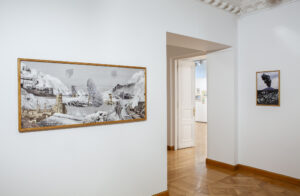
A.A.V.V., Qfwfq. Storie di artisti in movimento / Qfwfq. Opowieści artystów w ruchu, installation view at Italian Institute of Culture, Warsaw, photo Frederik Gruyaert
Calvino returned to the cultural climate in which he lived, through his writing, the need to reduce the boundaries of expressive language still too anchored to the past. In the context of the exhibition you curated, which boundaries and which languages do you want to convey and overcome in a present time continually punctuated by the anxiety of progress and the future?
Alex Urso: The theme of time, in the context of the exhibition, is both crucial and relative. Those on display are works that speak of displacement, of movement; and the movement necessarily involves the shift from a before to an after. But these works are in some ways “suspended” because they take shape from memories, from family photos, from personal and universal stories that transcend temporal coordinates. The only temporal aspect that needs to be taken into account here, in my opinion, is that which concerns the lives of the individual authors. And it’s an extremely sentimental aspect. Many of the artists are over 40 and mid-career, which places them (most likely) in the perspective of men and women dealing with themselves and their human experience. On their part I did not perceive an opposition to the past or a tension towards the future, but the desire to define themselves as human beings within a world and a time that is the only one they know: the present one.
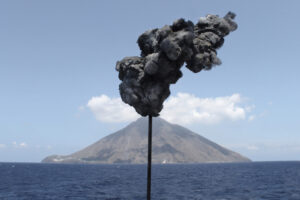
Michał Smandek, Prognostyk (St
Write, describe, tell. Many synonyms to put continuous experimentation into practice. In the case of this exhibition, what does the experimentation that each individual participating artist wanted to implement consist of?
Alex Urso: In an artist’s research, experimentation must not be a cause but a consequence. In other words, you are not experimental because you decide to be: there is a certain amount of unawareness in following paths that have not yet been taken. Each of the artists on display created these works driven by infinite reasons, almost always personal. Not all of them are known to us, but the final result of each of these works is known to us, and we focused on that. They are works that speak of women who guard the secrets of defunct languages, of men who have put their lives in a suitcase, of others who have returned home after having lost contact with reality. There is a common thread that links all these works, and it is in the stories they tell, rather than in the way in which they were conceived.

A.A.V.V., Qfwfq. Storie di artisti in movimento / Qfwfq. Opowieści artystów w ruchu, installation view at Italian Institute of Culture, Warsaw, photo Frederik Gruyaert
What metaphorical representations emerge in the structure and forms of the works in relation to Calvino’s literary story?
Leonardo Regano: I believe that above all comparisons the loss of points of reference and the lack of identity emerge. It is the great theme of our contemporaneity which makes us reread Italo Calvino’s work feeling it current and full again of food for thought. Among all, I can mention the works by Giuseppe Stampone which find a point of reference in contact with his hometown, Abruzzo and its mountains. But also in those by Radek Szlaga in which that sense of polishness is investigated, that is, the cultural identity of the Polish people and how this relates to a foreign land.
Info:
AA.VV., Qwfq. Storie di artisti in movimento
a cura di Leonardo Regano e Alex Urso
12/10/2023 – 6/12/ 2023
Istituto Italiano di Cultura di Varsavia
ul. Marszałkowska 72, Varsavia (Polonia)
Orari: da lunedì a giovedì 10.00-13.00 e 14.00-16,30; venerdì 10.00 – 14.00
Info: tel: +48 22 6280610
iicvarsavia@esteri.it
iicvarsavia.esteri.it
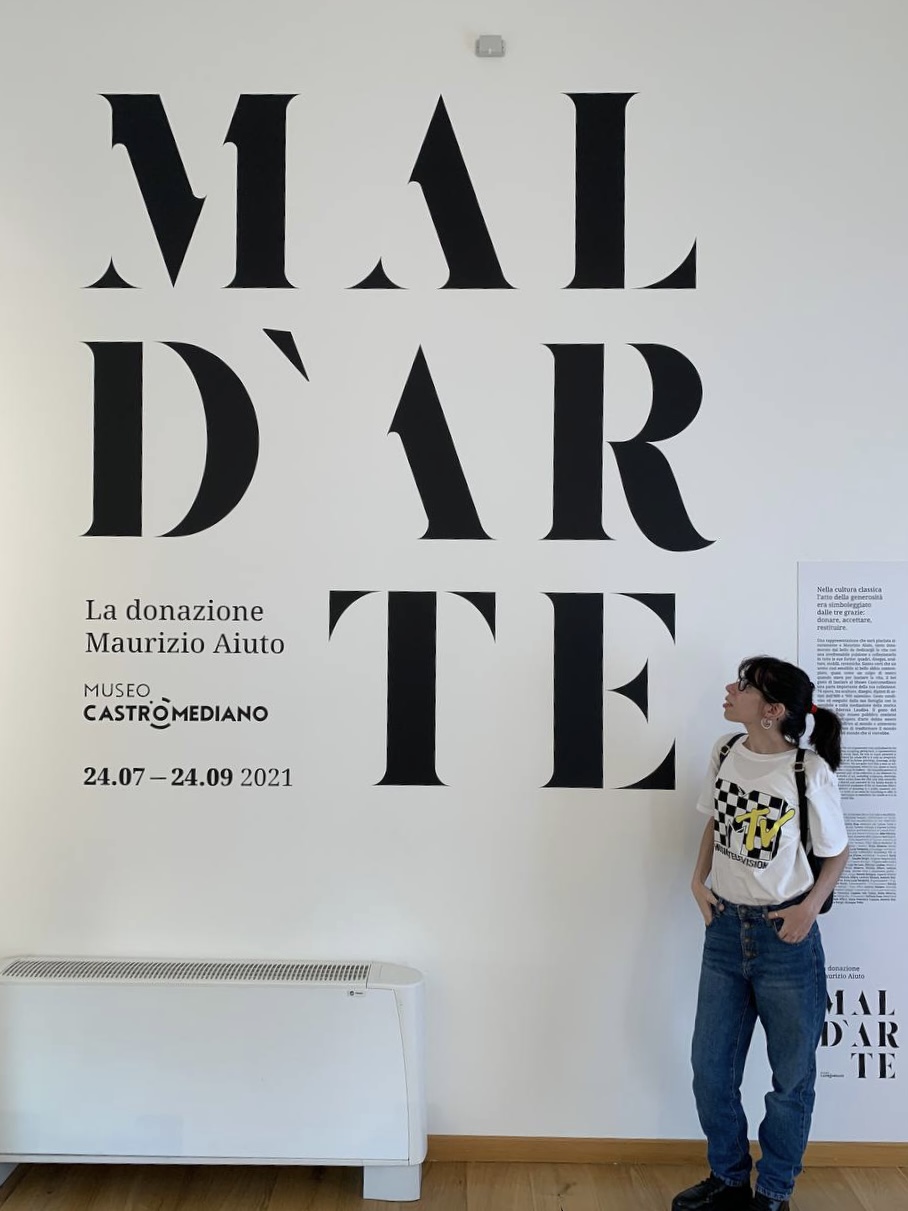
After obtaining the high school languages diploma, she continued her studies graduating in Art History at the University of Salento, with a bilingual thesis on the Pre-Raphaelites. Since then, she has been actively contributing as a columnist and collaborator with national blogs and with local magazines and TV programs.






NO COMMENT